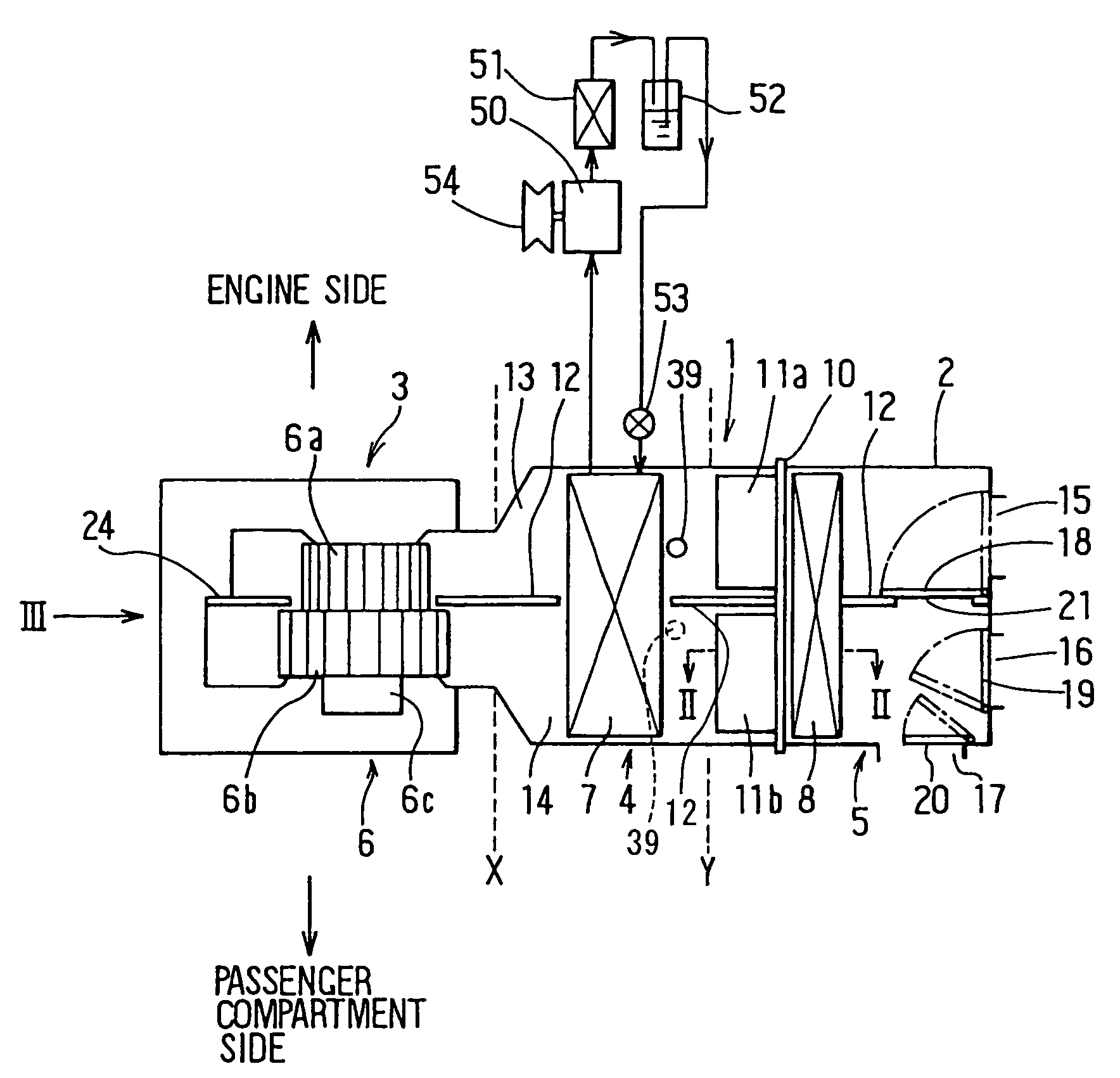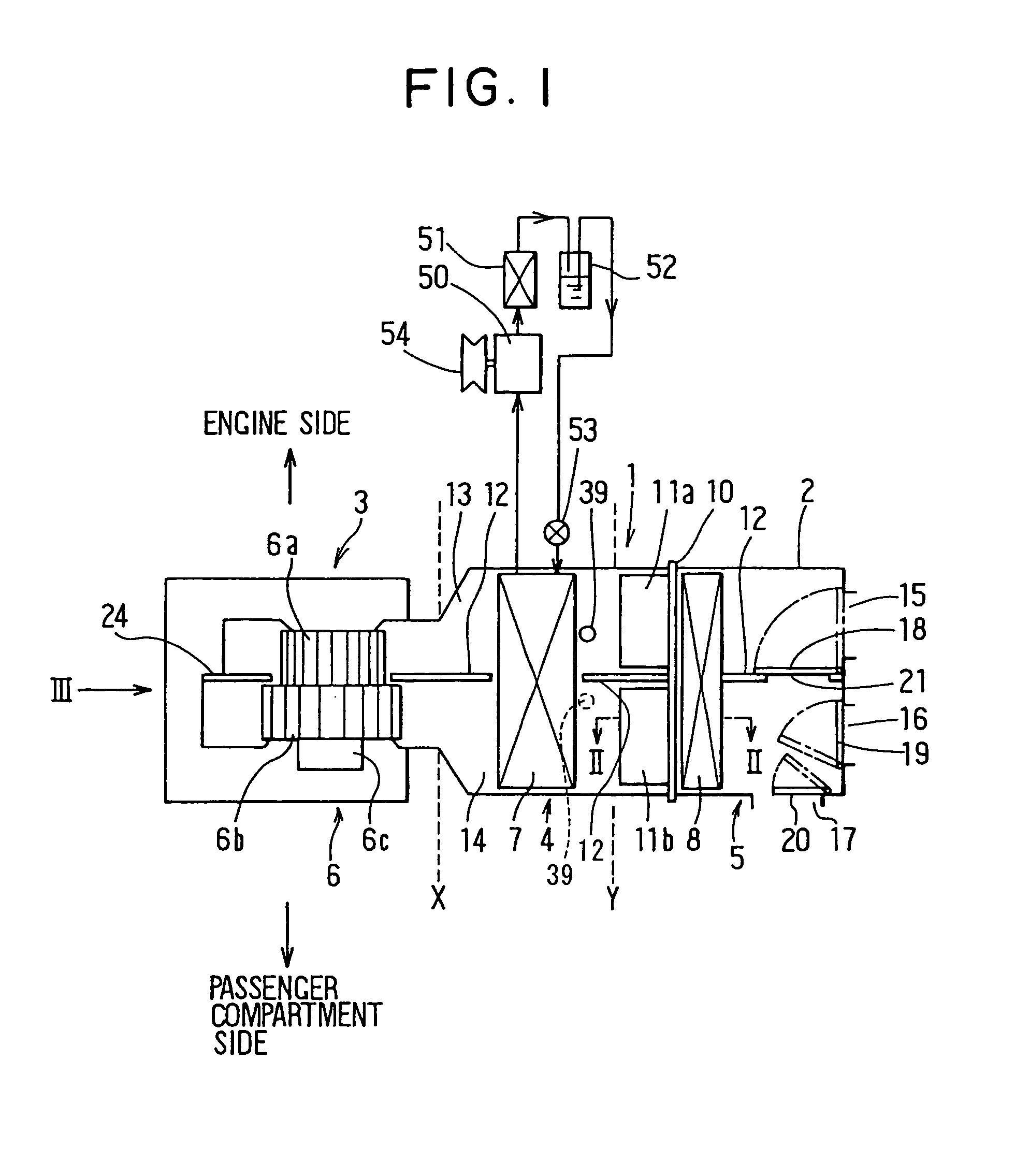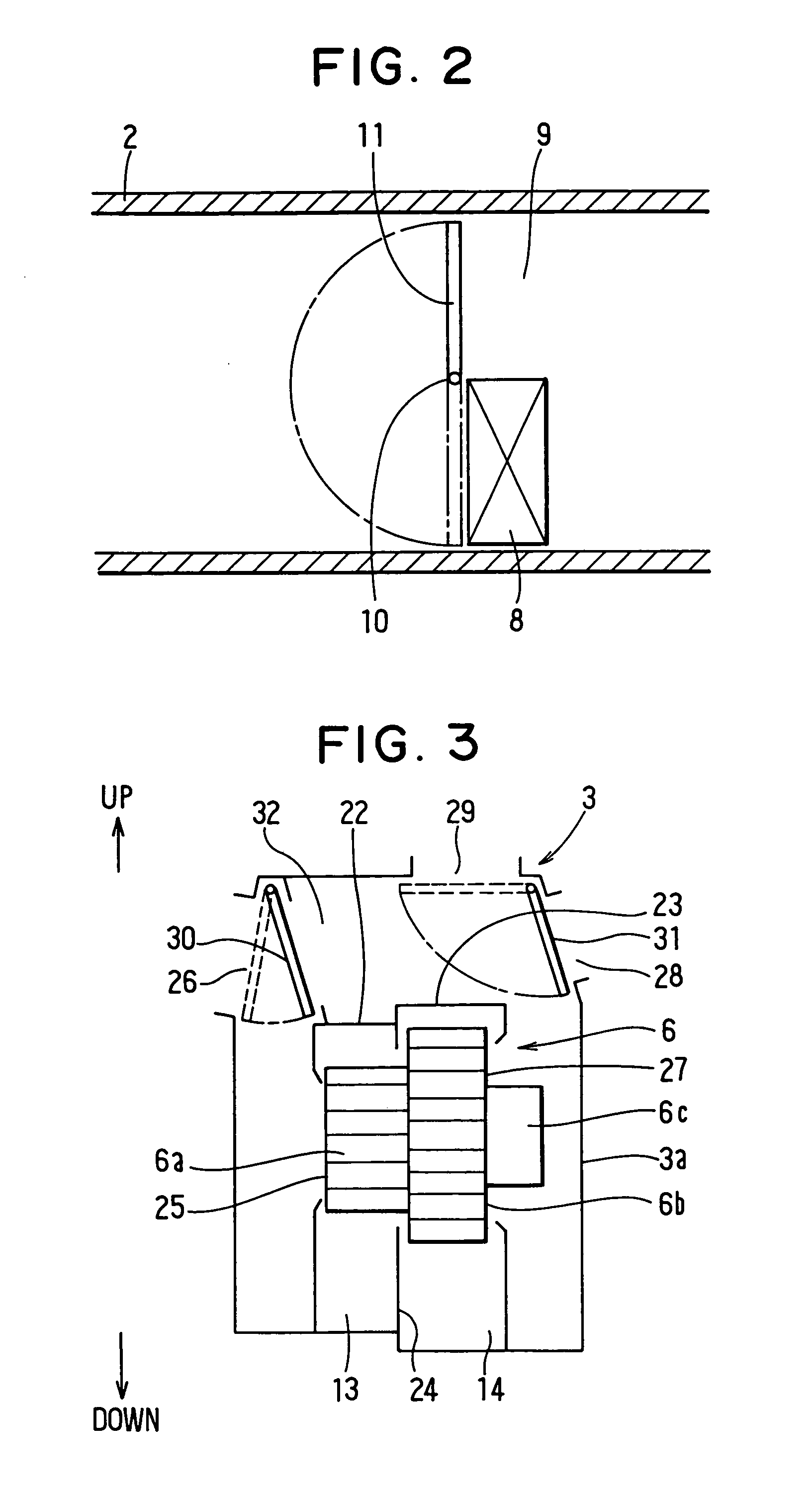Air conditioning apparatus for vehicle
- Summary
- Abstract
- Description
- Claims
- Application Information
AI Technical Summary
Benefits of technology
Problems solved by technology
Method used
Image
Examples
first embodiment
[0038]the present invention will be described.
[0039]In this embodiment, each of air conditioning components in an air conditioning unit for air conditioning a space in a passenger compartment of a vehicle having a diesel engine mounted thereon is controlled by an air conditioning control apparatus (hereinafter referred to as “ECU”.
[0040]Firstly, a construction of the air conditioning unit will be described with reference to FIG. 1.
[0041]The air conditioning unit 1 is mounted on the vehicle in such a manner that an upward direction of FIG. 1 is set to a front direction of the vehicle (toward the engine), a downward direction of FIG. 1 is set to a rear direction of the vehicle (toward the passenger compartment), and a right-and-left direction of FIG. 1 is set to a width direction of the vehicle. The air conditioning unit 1 is provided with an air conditioning case 2 for forming an air passage for introducing conditioned air into the passenger compartment.
[0042]The air conditioning cas...
second embodiment
[0100]the present invention will be described.
[0101]The second embodiment differs from the first embodiment in that the post-evaporator temperature sensor 39 is disposed in the second air passage 14 as shown in phantom in FIG. 1 of step 180a in FIG. 6 is modified. The other features are same as in the first embodiment.
[0102]As described above with reference to FIGS. 11C and 11D, when the post-evaporator temperature sensor 39 is disposed in the second air passage 14 of the evaporator 7, the temperature of air blown out from a part at the inside-air of the evaporator 7 increases so that the dehumidifying capacity may be deteriorated. In the second embodiment, as shown at step 180a′ of FIG. 10, in winter season where the outside-air temperature Tam is low, the set temperatures T1 and T2 are set in a low area A (e.g., T1=2° C., T2=3° C.). In an intermediate period of spring or fall, the set temperatures T1 and T2 are set in an intermediate area B (e.g., T1=3° C., T2=4° C.). In summer se...
fourth embodiment
[0137]the present invention will be described.
PUM
 Login to View More
Login to View More Abstract
Description
Claims
Application Information
 Login to View More
Login to View More - R&D
- Intellectual Property
- Life Sciences
- Materials
- Tech Scout
- Unparalleled Data Quality
- Higher Quality Content
- 60% Fewer Hallucinations
Browse by: Latest US Patents, China's latest patents, Technical Efficacy Thesaurus, Application Domain, Technology Topic, Popular Technical Reports.
© 2025 PatSnap. All rights reserved.Legal|Privacy policy|Modern Slavery Act Transparency Statement|Sitemap|About US| Contact US: help@patsnap.com



